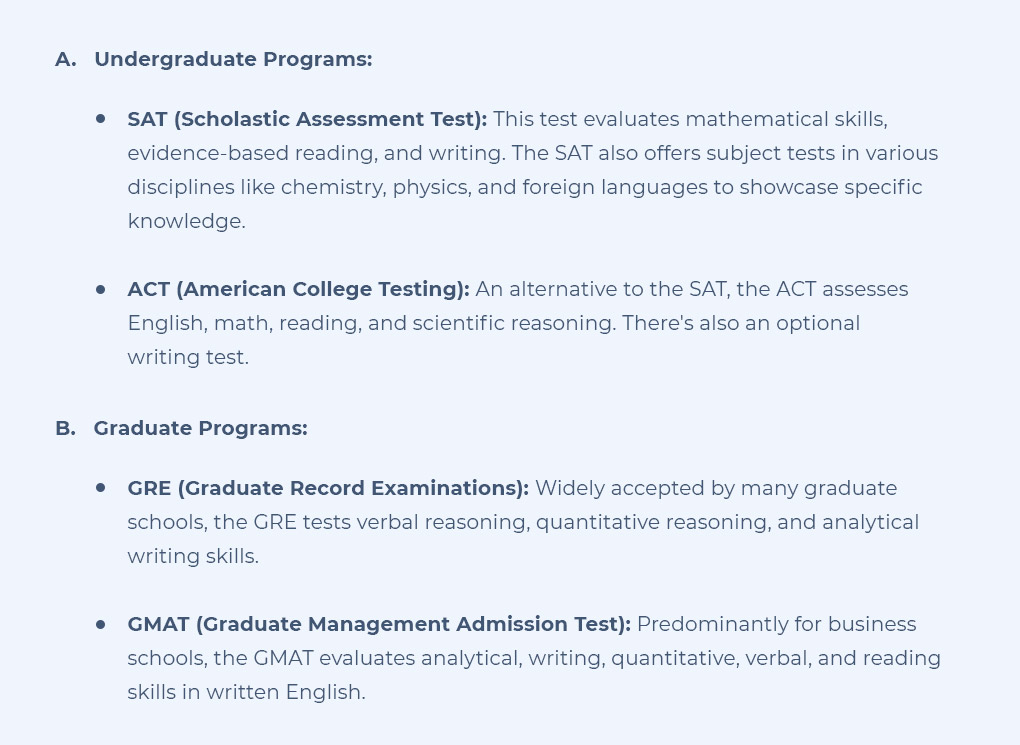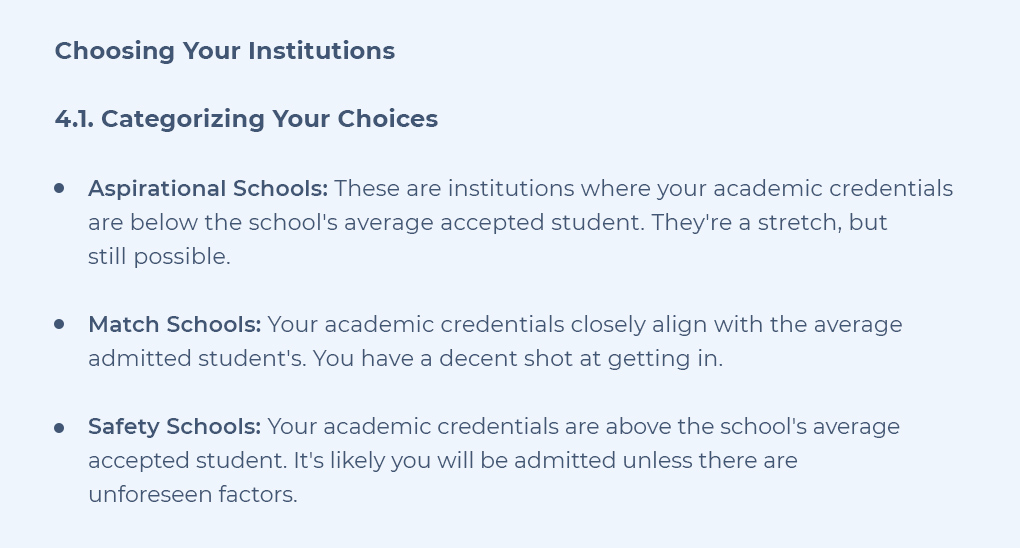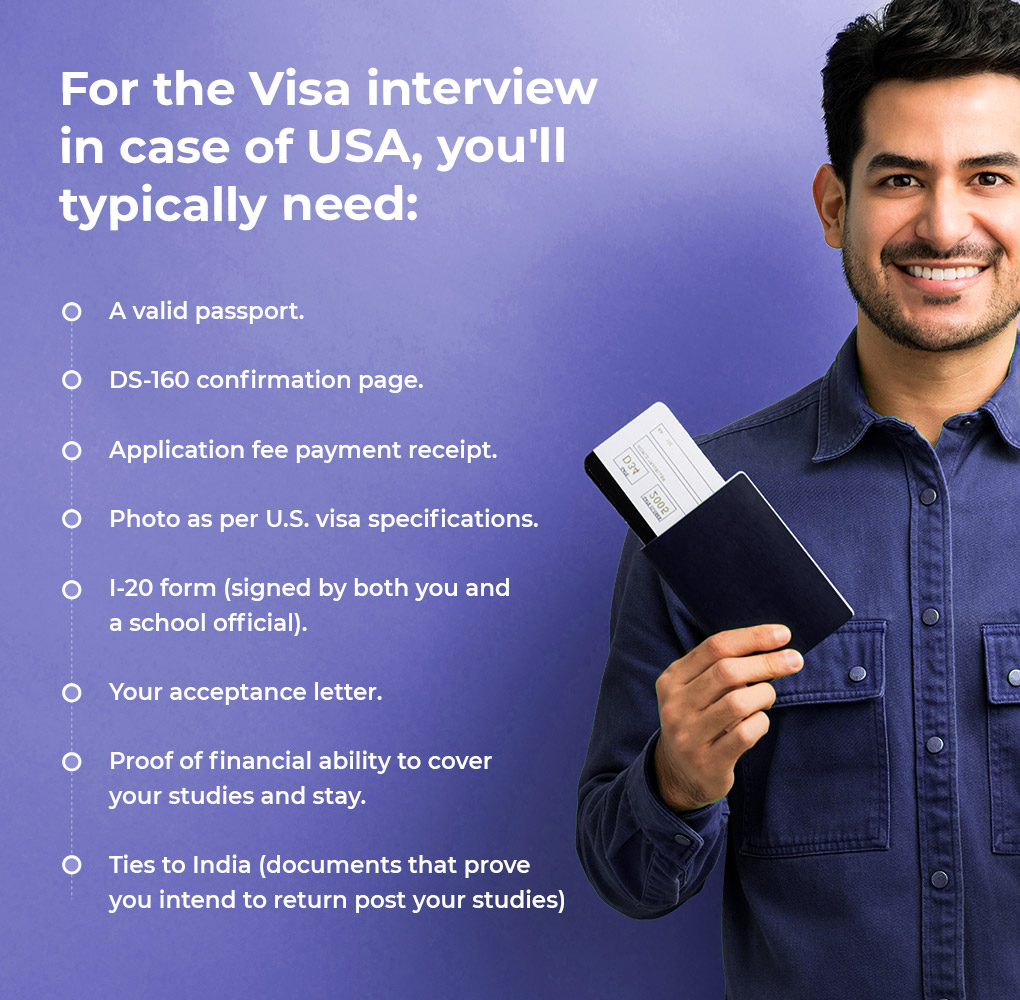

The United States of America is a global powerhouse in higher education, a hub for innovation and research, and a diverse blend of cultures, traditions, and ideas. With its top-ranking universities, diverse study programs, and a rich cultural tapestry, the U.S. has long been the premier destination for students from around the globe. If you're considering embarking on an academic journey in the U.S., this guide is designed to help you navigate the terrain with ease.
The educational landscape of the USA is often viewed with a sense of awe and admiration. With an impressive line-up of institutions that consistently rank high on global platforms, the country is undeniably a powerhouse in the academic arena. But what makes American education truly stand out?

Alumni associations often hold events, workshops, and seminars, providing a platform for past students to connect and collaborate.
Additionally, many universities have incubators and support systems to help students turn their innovative ideas into start-ups.
For more compelling reasons read our blog "14 Reasons why should Indian students study in the USA"
The USA is home to a multitude of prestigious institutions, including the Ivy League schools such as Harvard, Yale, and Princeton. But beyond these iconic names:
Additionally, many universities have incubators and support systems to help students turn their innovative ideas into start-ups.

Self-assessment is the preliminary and most crucial step for any student aiming to study abroad. It forms the foundation of your educational journey, ensuring that your decisions align with your aspirations, capabilities, and overall life goals. For those considering the USA, this phase becomes particularly essential given the vastness and diversity of opportunities the country offers.
2. Research your options for Studying in the USA
As you embark on your journey to pursue higher education in the USA, researching your options is paramount. Given the vast number of institutions and the extensive variety of courses they offer, it’s vital to find a university and program that aligns perfectly with your academic goals and personal preferences. Here’s a detailed approach to guide you through this process.
2.1. Diversity of Institutions
The USA is home to over 4,000 higher education institutions, ranging from community colleges, public universities, private institutions, to the famed Ivy League schools. Each has its own set of strengths, specialties, and cultures.
2.2. Course Offerings
• Broad Spectrum: US universities offer a plethora of undergraduate, postgraduate, and doctoral programs. Whether you're keen on arts, sciences, business, or interdisciplinary studies, there's a course tailored for you.
• Curriculum Structure: While researching, delve into the course structure. Some institutions offer a flexible curriculum allowing students to choose a variety of electives, while others may have a more rigid, specialized structure.

2.3. Faculty Credentials
• Expertise and Reputation: Renowned scholars, researchers, and industry professionals often teach at US institutions. Check out faculty profiles, publications, and their contributions to the field.
• Student-Faculty Ratio: This metric can offer insights into class sizes and the level of individual attention you might expect. A lower ratio often indicates smaller class sizes, fostering better student-teacher interactions.
2.4. Location and Environment
• Geographical Diversity: From the bustling cities of New York and Los Angeles to the serene college towns like Charlottesville or Ann Arbor, the US offers a range of environments. Decide if you prefer urban, suburban, or rural settings.
• Climate Considerations: The US spans various climate zones. If you have a preference or aren't adaptable to extreme weather conditions, factor this into your choice.
2.5. Campus Culture and Facilities
• Cultural Activities and Clubs: Universities in the US emphasize holistic development. Research the extracurricular activities, clubs, and organizations on campus that might resonate with your interests.
• Infrastructure: Modern libraries, research facilities, labs, sports complexes, and cultural centres enhance the academic experience. A tour, either virtual or in person, can give you a feel for the facilities.
2.6. Using Multiple Resources
• Official Websites and Brochures: These provide firsthand information about courses, faculty, admission criteria, and more.
• Online Student Forums and Reviews: Platforms like College Confidential, GradCafe, and others provide real student experiences, insights, and reviews about universities.
• Alumni Networks: Connecting with alumni can offer candid feedback about their experiences, the institution’s strengths, and potential challenges.

3. Check Entry Requirements for Studying in the USA
3.1. Understanding the Requirement

3.2. Choosing the Right Test
While many institutions accept scores from any of the standardized tests, some programs or scholarships might have specific requirements. It's essential to research and determine which test aligns best with your chosen course or institution.
English Proficiency Exams
3.3. Demonstrating Language Proficiency
For non-native English speakers, demonstrating proficiency in the English language is paramount.

3.4. Selecting the Best Fit
The choice between IELTS, TOEFL, or PTE should be based on personal comfort with the test format, availability in your region, and specific university requirements.

Preparation Tips
3.5. Start Early
It's recommended to begin your exam preparations at least 6-12 months in advance, depending on your existing skill level. This provides ample time for understanding the exam format, working on weaker areas, and taking mock tests.
3.6. Resources and Training
• Preparatory Courses: Several institutions offer preparatory courses for these exams. These courses provide structured learning, practice materials, and insights into the exam format.
• Online Platforms: Websites like Khan Academy (for SAT), Magoosh, and Manhattan Prep offer valuable resources, tutorials, and mock tests.
• Official Guides: Official guides released by the test administrators (like the ETS for GRE and TOEFL) are instrumental, offering practice questions and test-taking strategies.
3.7. Practice Tests
Regular mock tests provide insights into your preparation level, highlight areas that need further attention, and familiarize you with the actual test environment.
3.8. Test Day Strategy
It's as essential to have a strategy for the exam day as it is to prepare for the test. Manage your time, stay calm, and remember to read instructions carefully.
4. Apply to Institutions: Navigating the U.S. College Application Process

4.2. Factors to Consider Beyond academic fit, think about:
• Campus culture and environment
• Size of the student population
• Location (urban vs. rural, climate)<
• Available resources and facilities<
• Opportunities for research or internships
Documentation: Your Application's Backbone
4.3. Academic Transcripts: Your Application's Backbone
• Request your school or college to provide your official transcripts early. Some universities might need a course-by-course credential evaluation, which organizations like WES (World Education Services) can provide.
4.4. Letters of Recommendation (LoR)
• Typically, universities ask for 2-3 LoRs. These should preferably come from teachers or professionals who know you well and can speak about your academic and personal strengths.
• Provide your recommenders with ample time, and consider giving them a brief about the course you're applying for, so they can tailor the letter accordingly.
4.5. Statement of Purpose (SoP)
• An SoP is your chance to tell the university about yourself, your aspirations, why you chose the course, and why that particular institution. Be genuine and make sure your passion shines through.
• Keep within the word limit, proofread for errors, and perhaps get a mentor or teacher to review it.
4.6. Exam Scores
• Depending on the university and course, you might need to send standardized test scores directly through the testing agencies. Some institutions might also accept self-reported scores initially, followed by official ones upon admission.
4.7. Additional Materials
• Depending on your course, you might need to submit a portfolio, resume, or other supplementary materials.

Application Fee: The Necessary Expense
4.8. Costs and Budgeting • Application fees in the U.S. can range from $50 to $90 or more per university. International students might sometimes face higher fees than domestic applicants.
4.9. Waivers and Discounts • Some universities offer fee waivers for applicants facing financial hardships. Check the institution's admissions webpage or contact the admissions office for potential fee waiver opportunities..
5. Financing Your Education: Making Your U.S. Academic Dreams Affordable
Pursuing higher education in the U.S. can be a significant financial undertaking, but with the right strategies and knowledge, it can become manageable. Let's delve into the various facets of financing your American educational journey.
Estimating Your Expenses
5.1. Tuition Fees
• U.S. university tuition fees can vary greatly depending on the type of institution. While private universities might have higher tuition rates, public universities often offer lower rates for in-state residents but higher for out-of-state and international students.
On average, undergraduates can expect to pay anywhere from $20,000 to $50,000 a year, while graduate programs can range from $20,000 to $45,000 per annum.
5.2. Living Expenses
• The cost of living varies based on location. Major cities like New York, San Francisco, or Boston tend to have higher living expenses compared to smaller towns or rural areas. Typical monthly living costs can range from $1,000 to $3,500.
5.3. Books and Supplies
• Textbooks and course materials can add up. On average, students might spend $1,200 to $1,500 per year on books and supplies, although buying second-hand or digital versions can reduce costs.
5.4 Travel and Miscellaneous Costs
• Consider travel expenses for flying back home during breaks or holidays. Also, budget for health insurance, personal expenses, and unforeseen costs.

Navigating Financial Aid
5.5. Scholarships
• Numerous U.S. universities offer scholarships based on merit, talent, or specific criteria. These can range from partial to full tuition waivers. It's advisable to check the university's financial aid website or contact their financial aid office for details.
5.6. Grants
• The Federal Work-Study program allows students to work part-time on or sometimes off-campus. International students on F-1 visas can work up to 20 hours per week during academic sessions and full-time during breaks.
5.7. Work-Study Programs
• Consider travel expenses for flying back home during breaks or holidays. Also, budget for health insurance, personal expenses, and unforeseen costs.
5.8. Assistantships (for Graduate Students)
• Many graduate programs offer teaching or research assistantships, which can provide a stipend and sometimes tuition remission. These are competitive and typically require the student to work on research projects or assist in teaching undergraduate courses.
Considering Education Loans
5.9. Home Country Loans
• Many banks in India recognize the value of a U.S. degree and offer education loans for studying abroad. Terms, interest rates, and loan amounts can vary, so it's crucial to research thoroughly.

6. Obtain a Student Visa:
After receiving that coveted acceptance letter, the next pivotal step is securing a U.S. student visa. Here’s a detailed breakdown to help you navigate this process smoothly.
6.1. The Importance of the Acceptance Letter
• Securing Your Spot: Once an American university sends you an acceptance letter, it’s an acknowledgment of your qualification for their program. However, to confirm your intent to join, most institutions require an initial deposit. This deposit not only cements your spot but also facilitates the commencement of the visa process.
• Keeping Records: Retain a copy of your acceptance letter and payment proof of the deposit. These documents are often necessary during your visa application process and can be instrumental in demonstrating your genuine intent to study.
6.2. Understanding the I-20 Form
• What is it?: The I-20 form, or the Certificate of Eligibility for Non-immigrant Student Status, is issued by your chosen U.S. institution. It confirms your acceptance into their program and provides essential details about your course, duration, and financial aspects.
• Timely Response: Once you receive the I-20 form, review it for accuracy. Sign it and keep multiple copies. This form is vital not just for your visa process but also for entering the U.S. and other related processes during your stay.
6.3. Navigating the DS-160 Form
• Online Application: The DS-160, or the Online Nonimmigrant Visa Application, is a mandatory form for all nonimmigrant visa applicants. It is available on the U.S. Department of State website. Ensure that all details entered match your passport and other documents.
• Digital Photograph: The DS-160 form requires a digital photograph that meets specific criteria. Make sure to follow the guidelines provided to avoid delays in processing.
• Submission and Confirmation: Upon completing the form, you'll receive a DS-160 barcode confirmation page. Print and save this. You'll need it for your visa interview.
6.4. Preparing for the Visa Interview
• Scheduling the Interview: Schedule your visa interview at the nearest U.S. embassy or consulate. Remember, wait times can vary, so it’s wise to book your appointment well in advance.
• Required Documentation:

7. Pre-departure Preparation: Gearing Up for Your American Dream
Every Indian student heading to the U.S. to pursue higher education is filled with a mix of exhilaration and nervousness. A new journey awaits, filled with learning, exploration, and personal growth. As you stand at the threshold of this journey, here's a deeper dive into the crucial pre-departure preparations:
7.1. Finding Your Home Away from Home: Accommodation
• On-campus vs. Off-campus:
o On-campus Housing: Living on campus, especially in dormitories, offers a unique opportunity to immerse yourself in the university culture. It's convenient, fosters camaraderie, and often includes utilities in the cost.
o Off-campus Housing: For students looking for more privacy or a cost-effective option, off-campus housing can be appealing. Some cities, given their high on-campus housing prices, can make off-campus apartments a cheaper alternative. Always check transportation options and commute times when considering this.
• Contracts and Agreements: Whether you choose on-campus or off-campus housing, ensure you read and understand any housing contracts or lease agreements before signing.
7.2. Ensuring Your Well-being: Health Insurance
• A Mandatory Requirement: The U.S. health care system is known for its high costs. As such, having health insurance is non-negotiable for international students.
• University Health Plans:Most universities provide health insurance plans tailor-made for students. They're often comprehensive and integrated with the university health services.
• Third-party Providers: Should you choose to or need to explore outside your university, several third-party providers offer health insurance plans for international students. Compare the coverage, costs, and reviews before making a choice.
7.3. Packing Essentials and Sentiments
• Clothing: Factor in the region's climate you'll be heading to. For instance, universities in the northern U.S. will require warm winter clothing.
• Academic Materials:Some specific books, instruments, or gadgets might be cheaper in India or not easily available in the U.S. It’s worth checking this in advance.
• Mementos: Photographs, small keepsakes, and even some traditional Indian snacks can help alleviate homesickness, reminding you of your roots in moments of solitude.
7.4. Embracing the New World: Orientation Programs
• A Soft Landing: Orientation programs are designed to help international students ease into their new environment. They provide an overview of the campus, academic expectations, and available resources.
• Networking:These programs are also the first opportunity to meet fellow international students, seniors, and even some faculty members. It’s the starting point of building your network in a new country.
• Cultural Acclimatization: Many orientation programs include segments on American culture, local customs, and essential dos and don'ts. It's a crash course in understanding and integrating into the American way of life.

8. Landing and Settling In: Initiating Your American Chapter
Taking that first step out of the airport and onto American soil can be a blend of excitement and apprehension. The land of dreams and opportunities awaits, but so does a new culture, a different academic setup, and a host of unknowns. Here's a detailed roadmap for Indian students to navigate those initial days in the USA:
8.1. Time is a Healer: Arriving Early
• Adjustment Period: Arriving at least a week or two before your classes or orientation program commence provides you with the much-needed window to settle down. You can use this period to acclimatize to the new time zone, weather, and surroundings.
• Overcoming Jet Lag:The time difference between India and the U.S. can lead to jet lag. Arriving early allows your body to adjust to the new schedule, ensuring you're fresh and attentive for your first day.
8.2. Your Financial Friend: Opening a Bank Account
• Why It's Essential: Having a local bank account makes it convenient to manage your finances, pay bills, and receive funds from India. Additionally, many institutions in the U.S. prefer transactions through local banks.
• Documentation:Typically, to open an account, you'd need your passport, I-20 form, proof of local address (like a housing contract or utility bill), and your Social Security number or an Individual Taxpayer Identification Number.
• Student-friendly Services: Many banks, especially those near campuses, offer accounts specifically tailored for students, often with minimal fees or special offers.
8.3. Stay Connected: Procuring a SIM Card
• Why It’s Important: Having a local number not only makes communication within the U.S. cheaper but is often necessary for various verification processes or services.
• Options Abound:Numerous telecom providers like AT&T, Verizon, and T-Mobile offer a range of plans. Shop around for deals, and consider monthly prepaid plans for flexibility.
• International Calling: Ensure your plan includes affordable international calling or messaging options, allowing you to stay in touch with loved ones back in India.
8.4. Know Your New Home: Exploring the Campus
• Guided Tours: Most universities offer guided campus tours for newcomers. These tours, often led by senior students, cover essential areas and provide a brief history of the institution.
• Key Facilities:Prioritize understanding locations of academic buildings relevant to your course, libraries, health centers, counseling services, student unions, and recreational areas.
• Networking: These explorations offer an excellent opportunity to meet fellow students, share experiences, and forge early friendships.

9. Explore Work Opportunities: Navigating the US Work Landscape as an Indian Student
The US, much like Australia, offers numerous work opportunities for international students, making it an ideal destination for those looking to garner experience alongside their academic journey. Not only does it provide a financial cushion, but working in the US can significantly enhance your resume. Here's a deep dive into the work scenario for Indian students in the USA:
9.1. On-Campus Jobs: A Convenient Start
• Accessibility and Convenience: On-campus jobs are the most accessible for international students. Positions can range from library assistants and lab technicians to student ambassadors and dining hall workers.
• Cultural Interaction:These roles can help you interact with a diverse group of individuals, enhancing your understanding of various cultures and improving your communication skills.
• Limitations: It's essential to note that on an F-1 student visa, you are restricted to working 20 hours per week during academic sessions, though you can work full-time during breaks.
9.2. Optional Practical Training (OPT) and Curricular Practical Training (CPT)
• OPT: This allows you to work in your field of study for up to 12 months (or up to 36 months for STEM students) post-graduation. It's a fantastic way to gain practical experience and transition to the professional US environment.
• CPT:This is essentially an internship or a work-study program, letting you gain hands-on experience in your field while you're still studying. Institutions often have tie-ups with companies to facilitate these opportunities.
9.3. Off-Campus Opportunities: Dive into the Real World
• Networking: Leveraging connections made through university alumni networks, professors, or peers can open doors to part-time jobs, internships, or research positions.
• Job Portals:Websites like LinkedIn, Glassdoor, and Indeed cater specifically to job seekers, listing numerous positions across industries and locations.
• Career Fairs: Universities frequently host career fairs where reputed companies scout for potential employees. It's a prime opportunity to land interviews or even job offers.
9.4. Work Restrictions and Compliance
• Stay Informed: Being on an F-1 visa, there are specific guidelines about where and how much you can work. Ensure you're well-versed with these rules to maintain your visa status.
• Seek Guidance:The International Student Office at your university can provide assistance regarding work regulations and opportunities tailored for international students.

10. Embrace the Experience: A Journey Beyond Academics
When you decide to study in the USA, it's not just about earning a degree; it's about embracing a holistic experience that shapes you, both professionally and personally. For an Indian student, this venture offers an unprecedented canvas of opportunities. Here's how to paint your own unique American story:
10.1. Engage Actively: Become a Campus Enthusiast
• Diverse Campus Life: U.S. universities are known for their vibrant campus life. From cultural fests and sports tournaments to academic seminars and art exhibitions, there's always something happening.
• Clubs & Organizations:Most universities boast an array of clubs — from debate societies and dance troupes to tech groups and environment clubs. For Indian students, joining the Indian Students Association can provide a touch of home while navigating a new culture.
• Personal Growth Workshops: Many institutions offer workshops on leadership, communication, mental health, and more. These sessions contribute significantly to personal development, equipping you with skills that transcend the classroom.
10.2. Network: Build Bridges for the Future
• Connect with Professors: Cultivating a rapport with your professors can be invaluable. They're not just educators but often industry leaders, researchers, or connected professionals. Regular interactions can lead to research opportunities, mentorships, and even job references.
• Alumni Associations:These are goldmines of connections. Alumni often provide insights into industry trends, job openings, or even offer internships.
• Peers as Collaborators: Your classmates are your immediate network. Collaborative projects, study groups, and even casual interactions can lead to future business ventures, research collaborations, or lifelong friendships.
10.3. Travel: Explore the Tapestry of America
• A Land of Diverse Landscapes: From the bustling streets of New York and sunny beaches of California to the majestic Rockies and vast plains of the Midwest, America is a geographical wonder. Use your holidays to explore its varied terrains.
• Cultural Immersion:Each state in the USA has its unique culture, food, festivals, and history. Dive deep into these experiences. Attend the famous Mardi Gras in New Orleans, explore the historical sites of Boston, or witness the grandeur of the Grand Canyon.
• Affordable Student Travel: As a student, you'll have access to numerous travel discounts. Whether it's by trains, buses, or budget airlines, there are myriad affordable ways to traverse the country. Plus, university-organized trips or those arranged by student groups are great ways to travel in groups and on a budget.
The United States offers a myriad of work opportunities that can greatly complement your academic journey. As an Indian student, the experience and exposure gained from the US work environment can be a game-changer, giving you a competitive edge in the global job market.

Studying abroad is an exciting and life-changing experience that offers students a chance to gain a global perspective and valuable exposure ...

In our rapidly globalizing world, where boundaries are melting away and opportunities abound, proficiency in the English language has become ...

Choosing to pursue higher education abroad is an exciting and life-changing decision. Among the plethora of options available to internationa...

Studying abroad is a life-altering adventure that opens doors to new cultures, experiences, and opportunities. Among the plethora of global s...

Australia, renowned for its world-class education and diverse cultural experiences, continues to be a favoured destination for international ...

Australia is not just famous for its iconic Sydney Opera House, the Great Barrier Reef, and its unique wildlife; it is also recognized global...

Studying abroad is a life-changing decision, and with so many options available, it can be overwhelming to choose the right country and univers...

As of March 2022, Australia has seen a consistent rise in its international student numbers, with enrolments reaching 440,219. This marks an ...